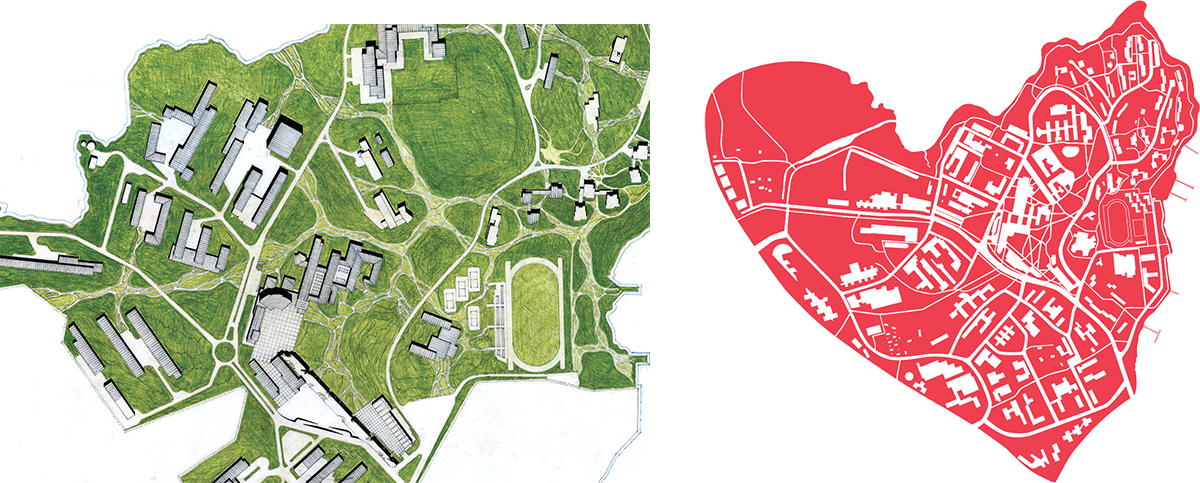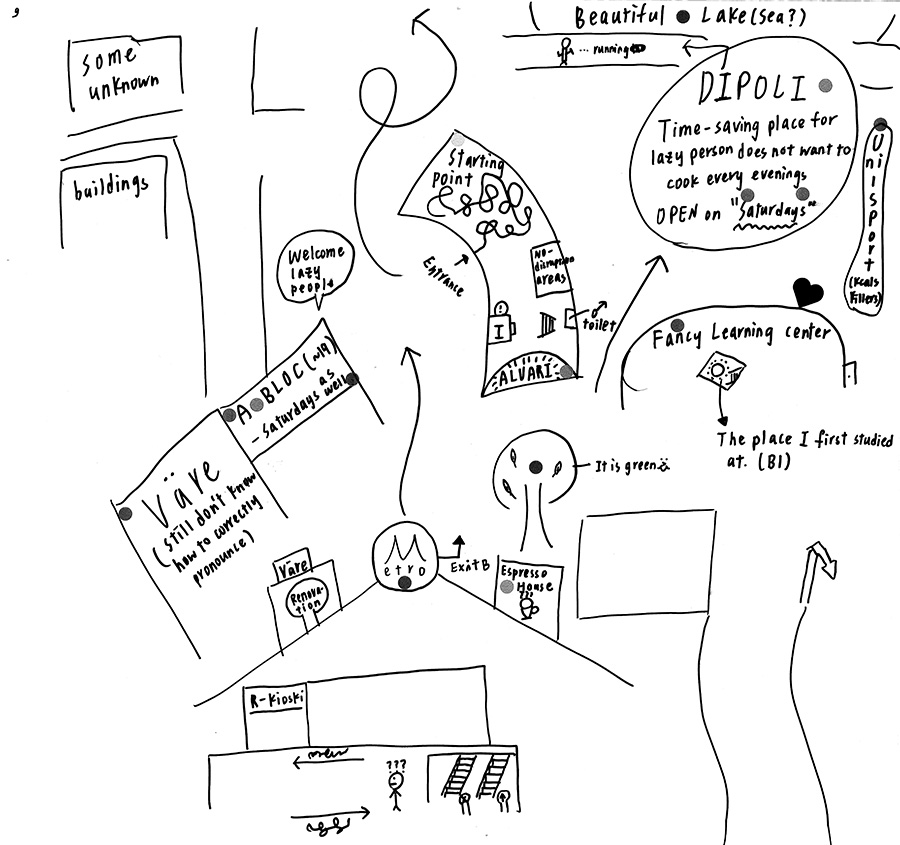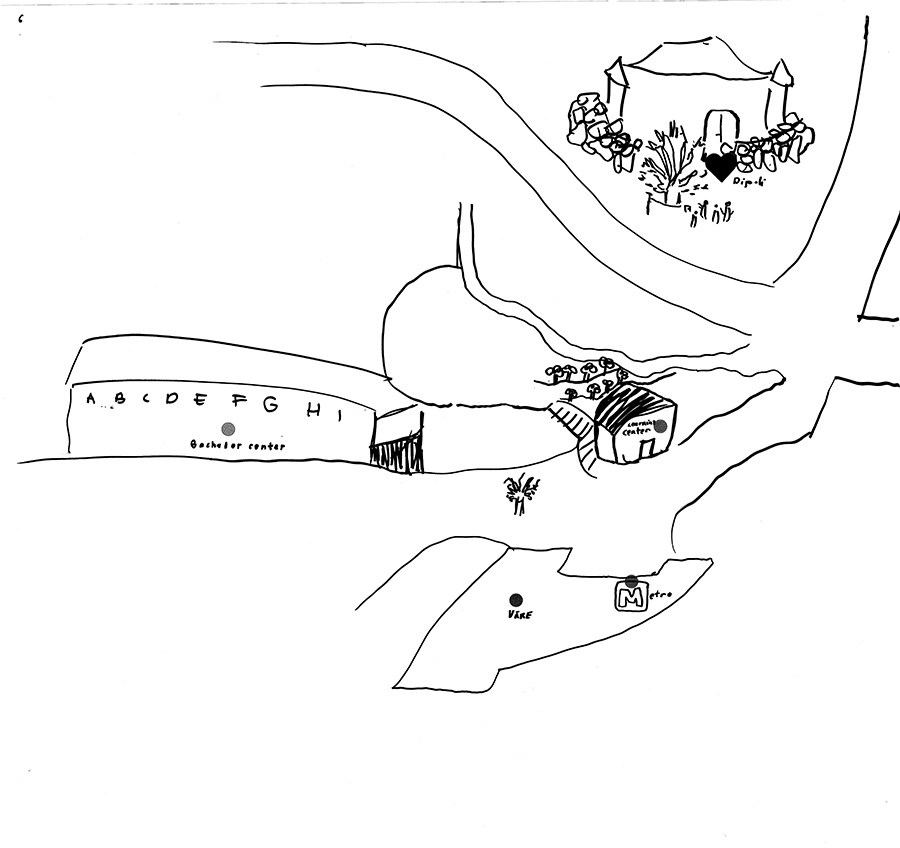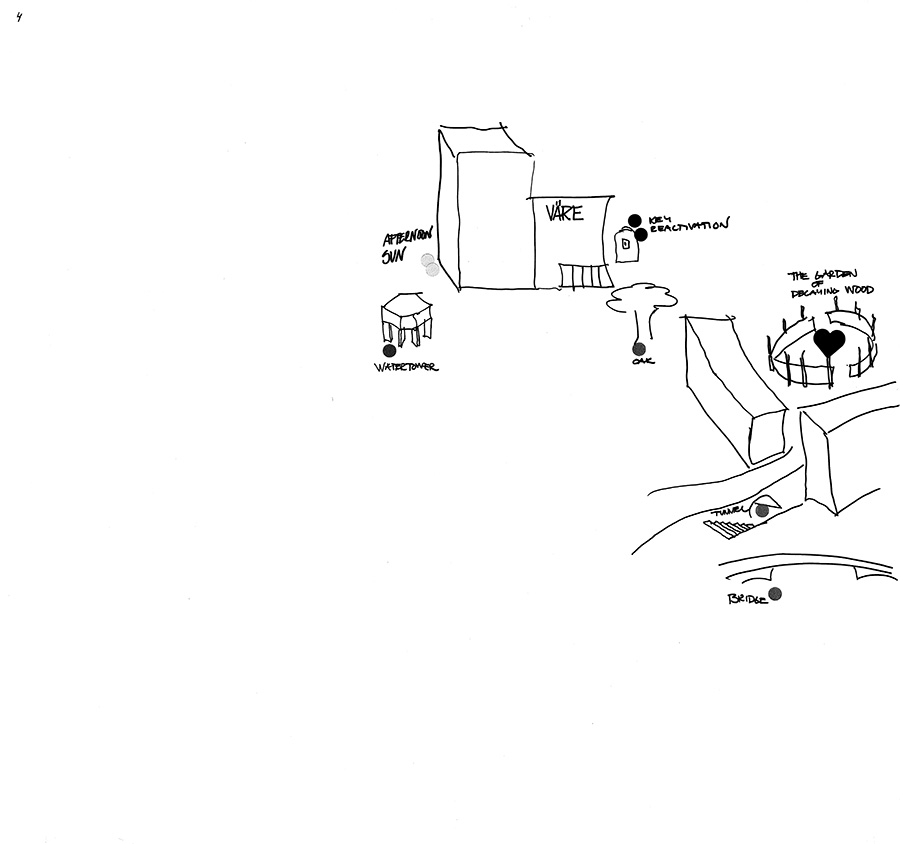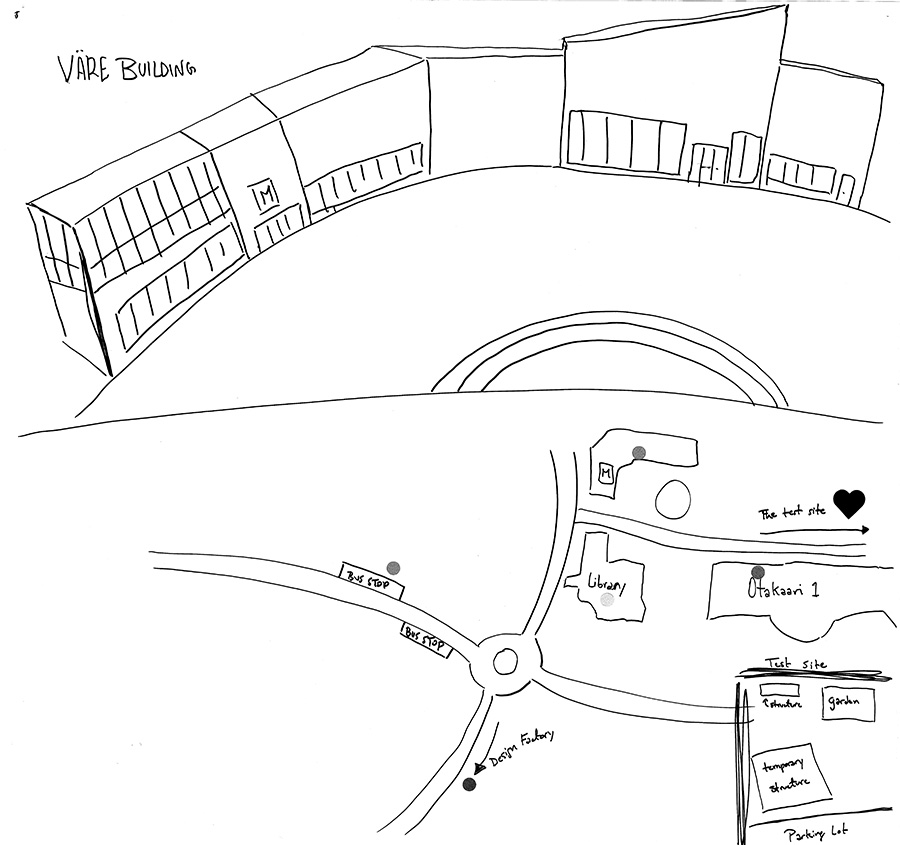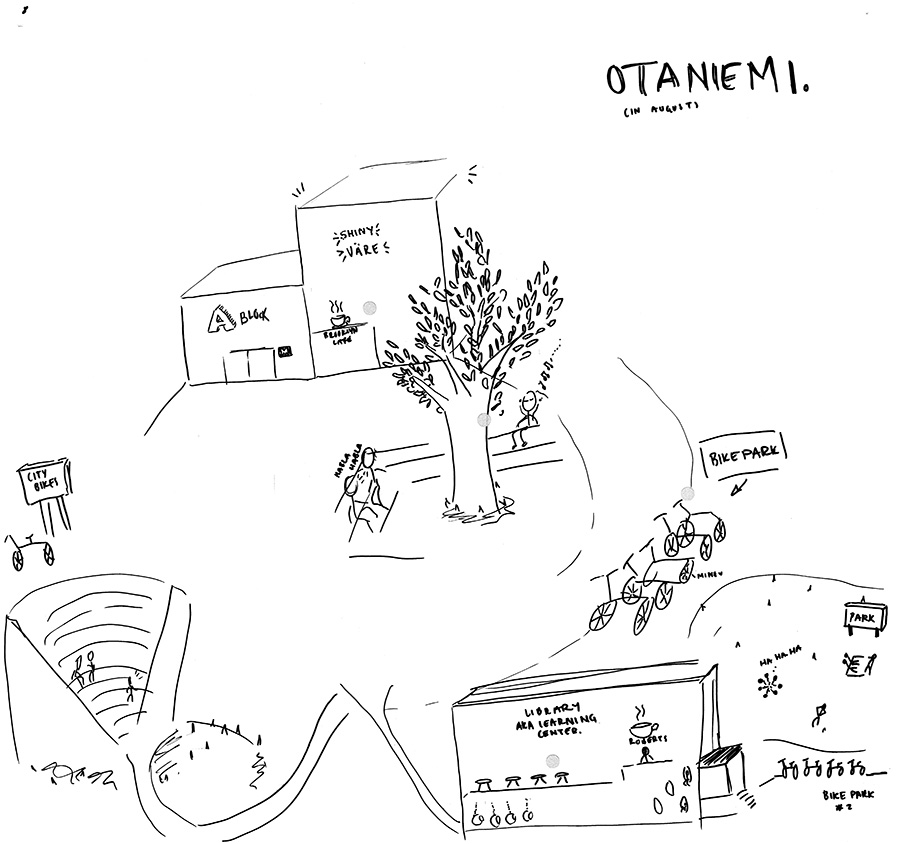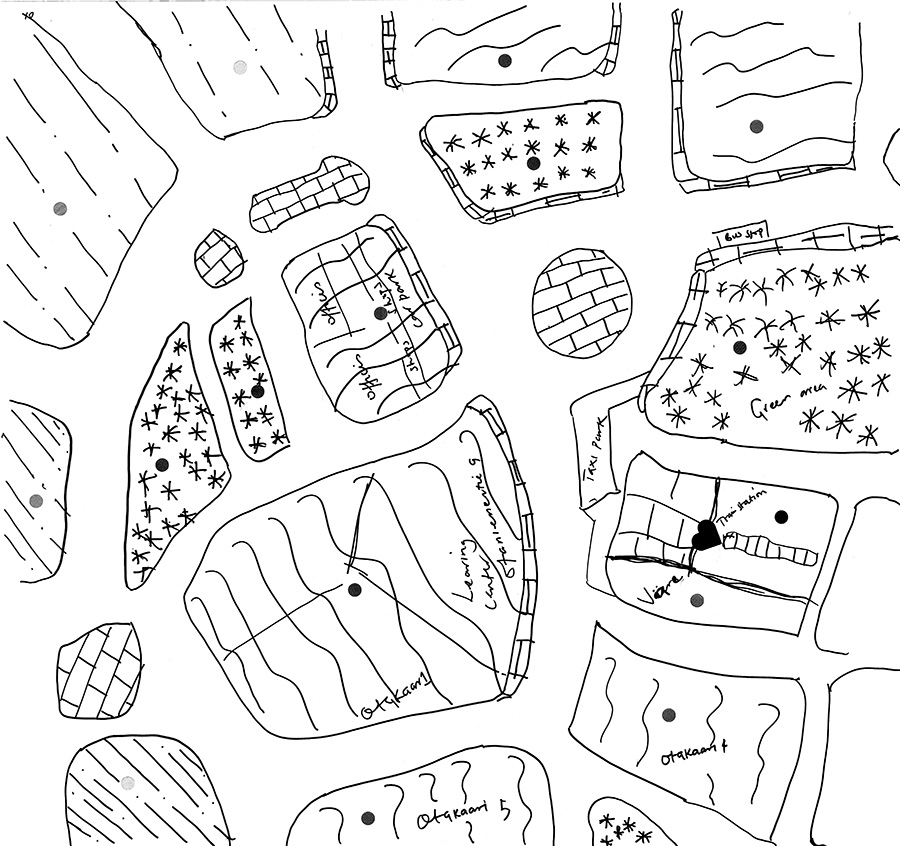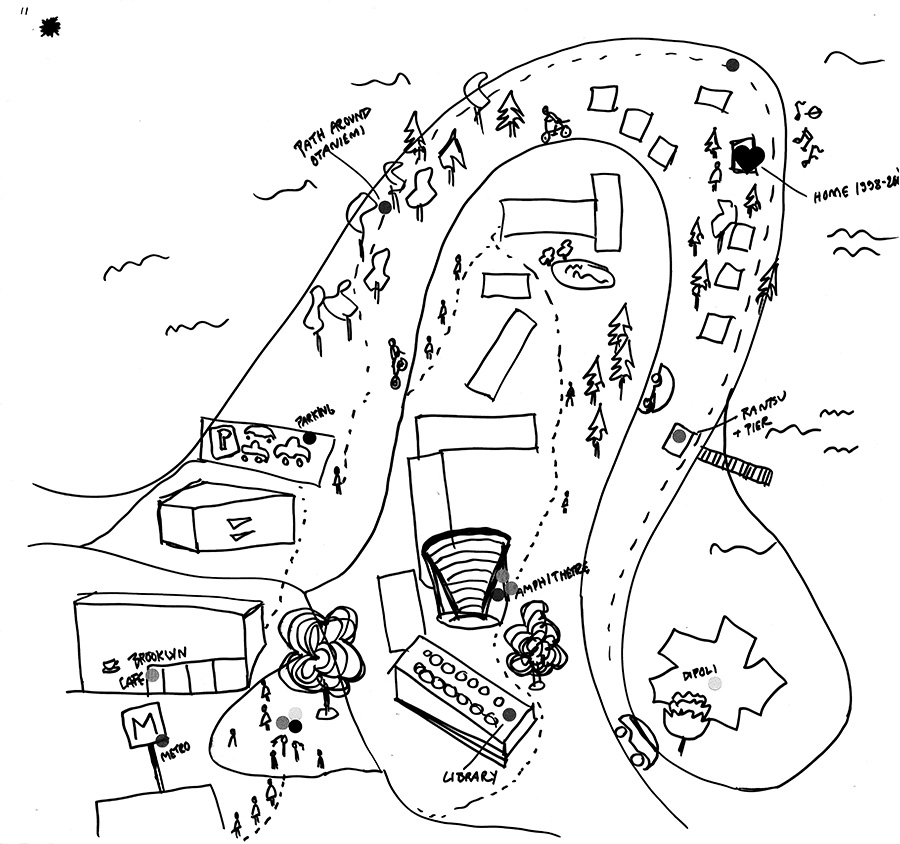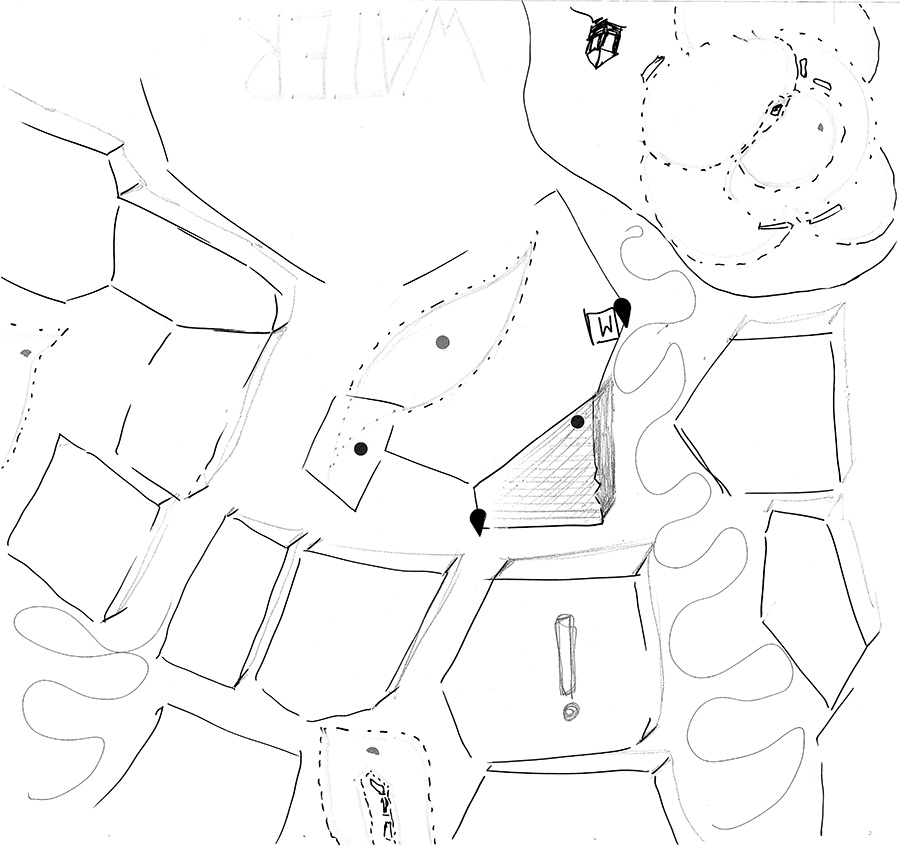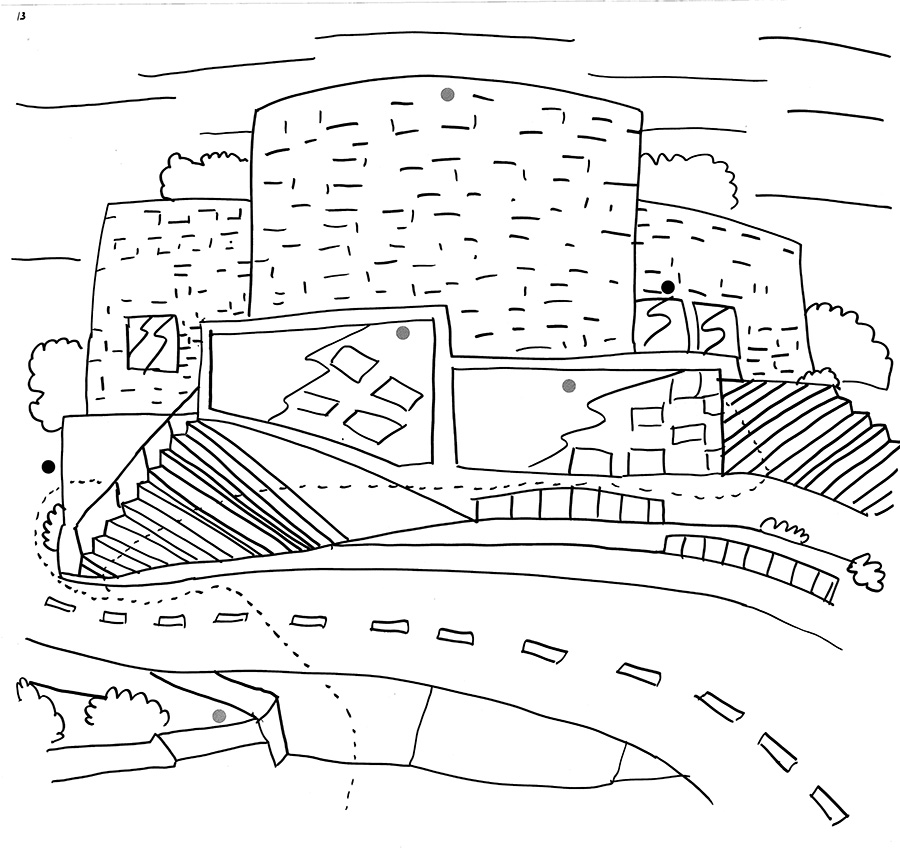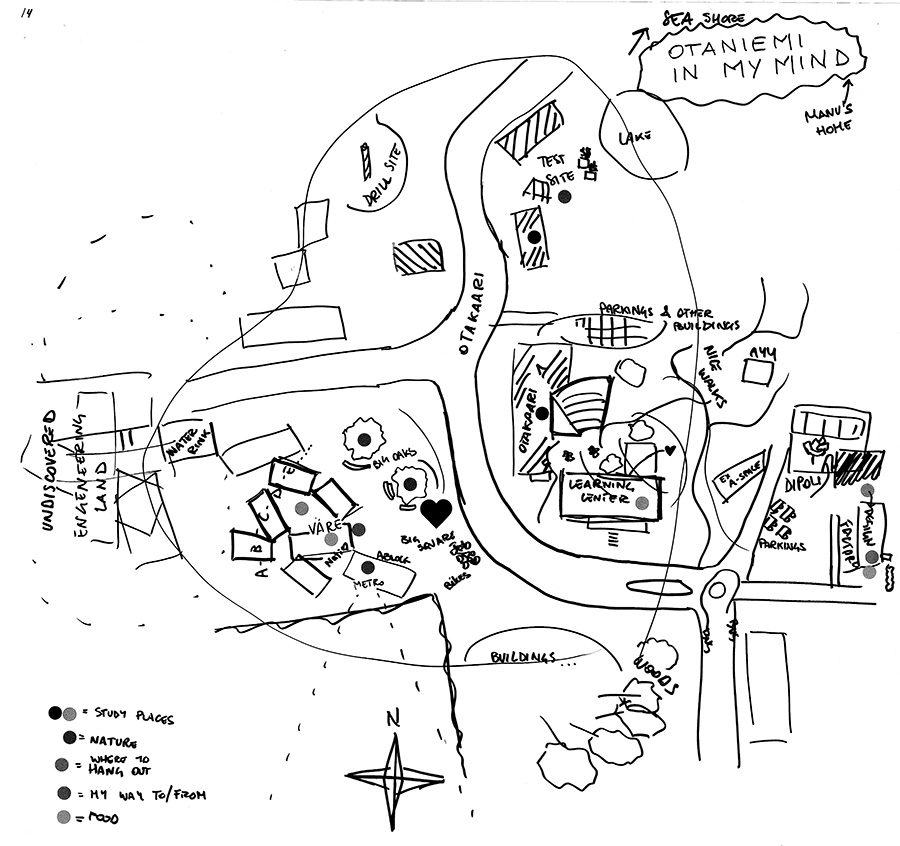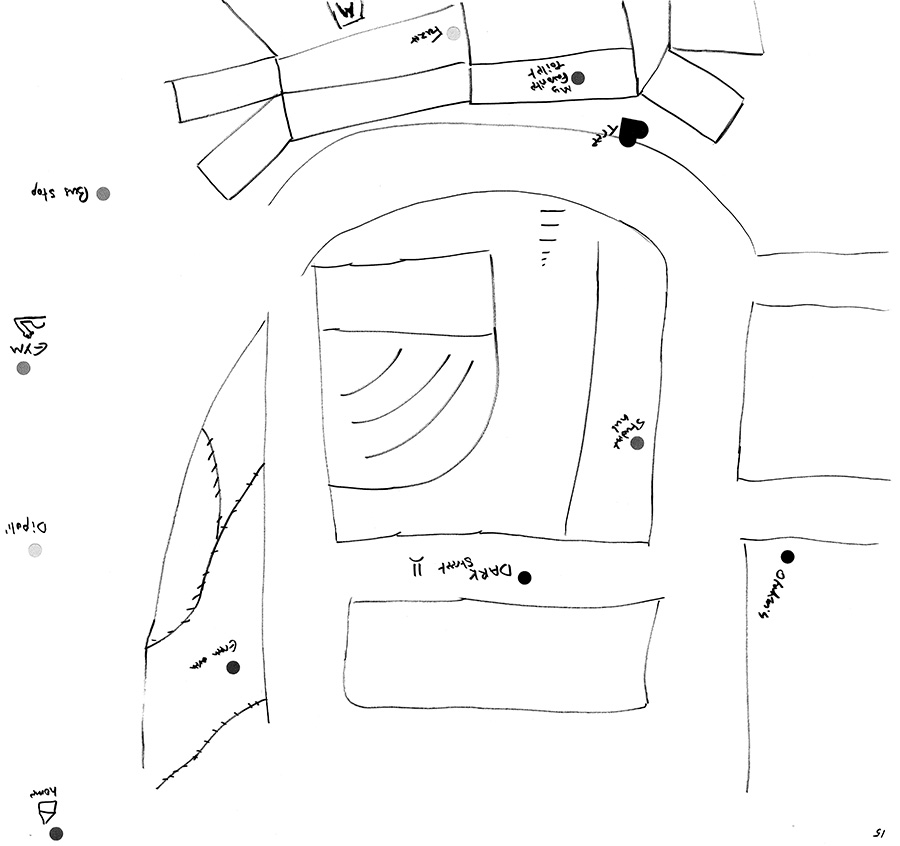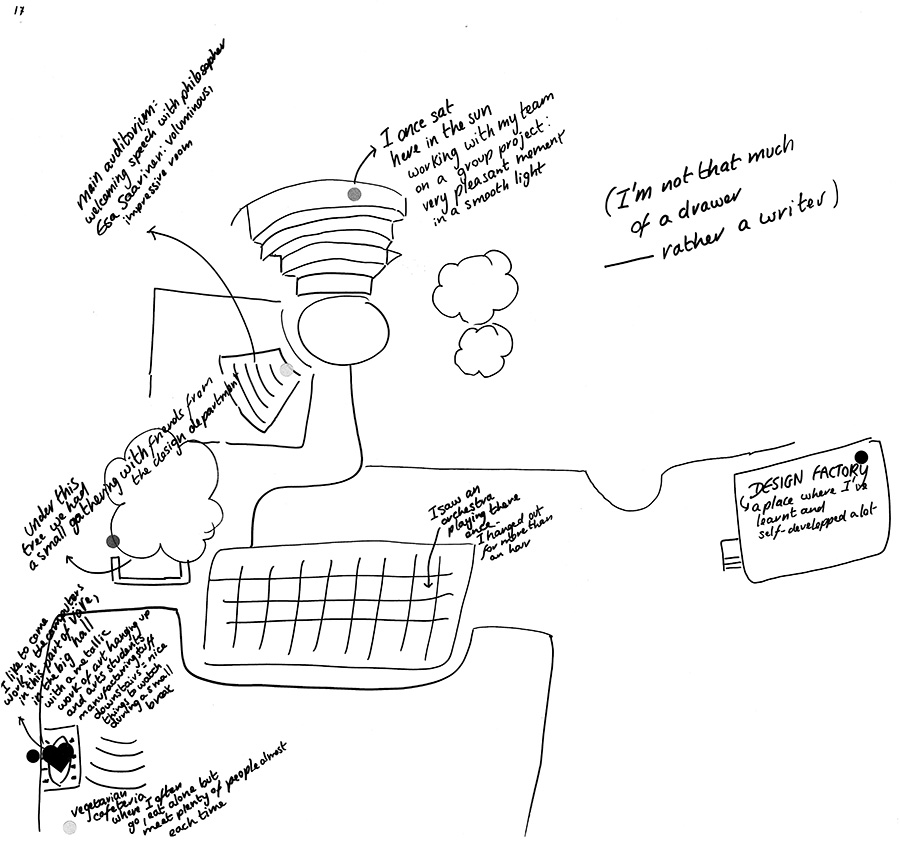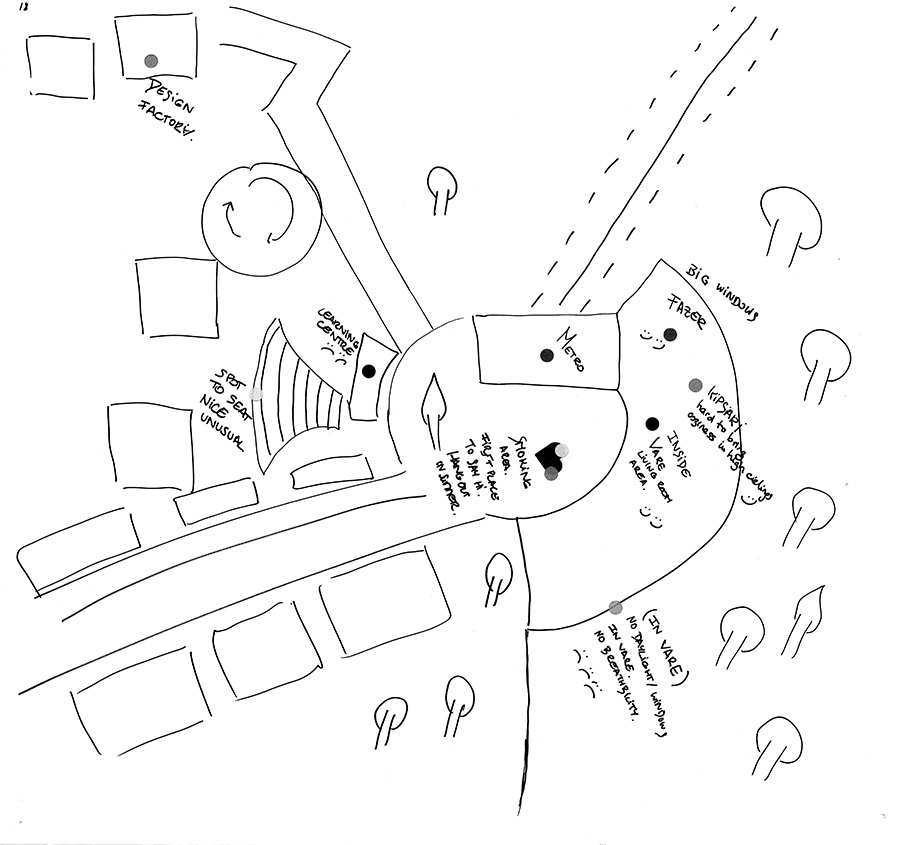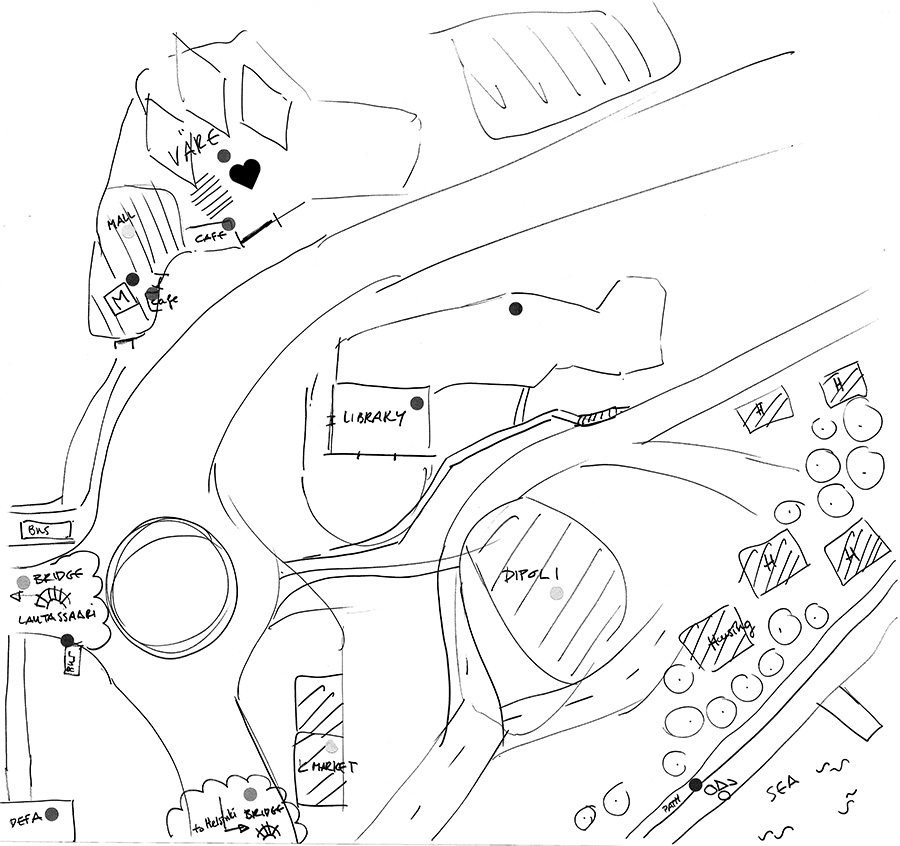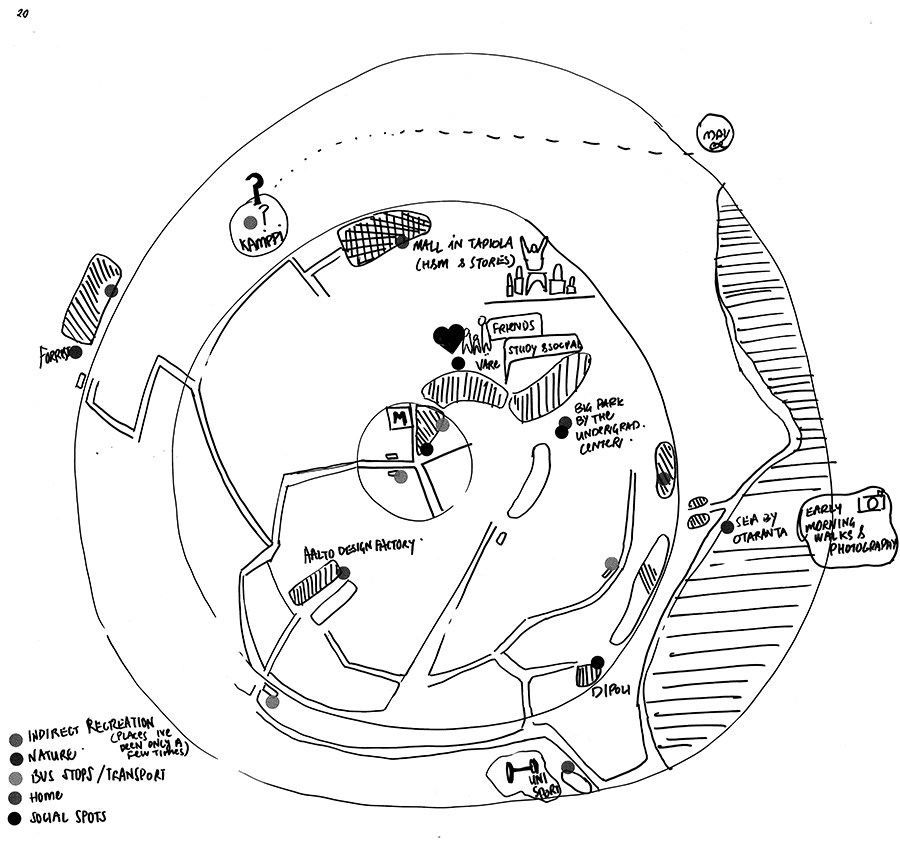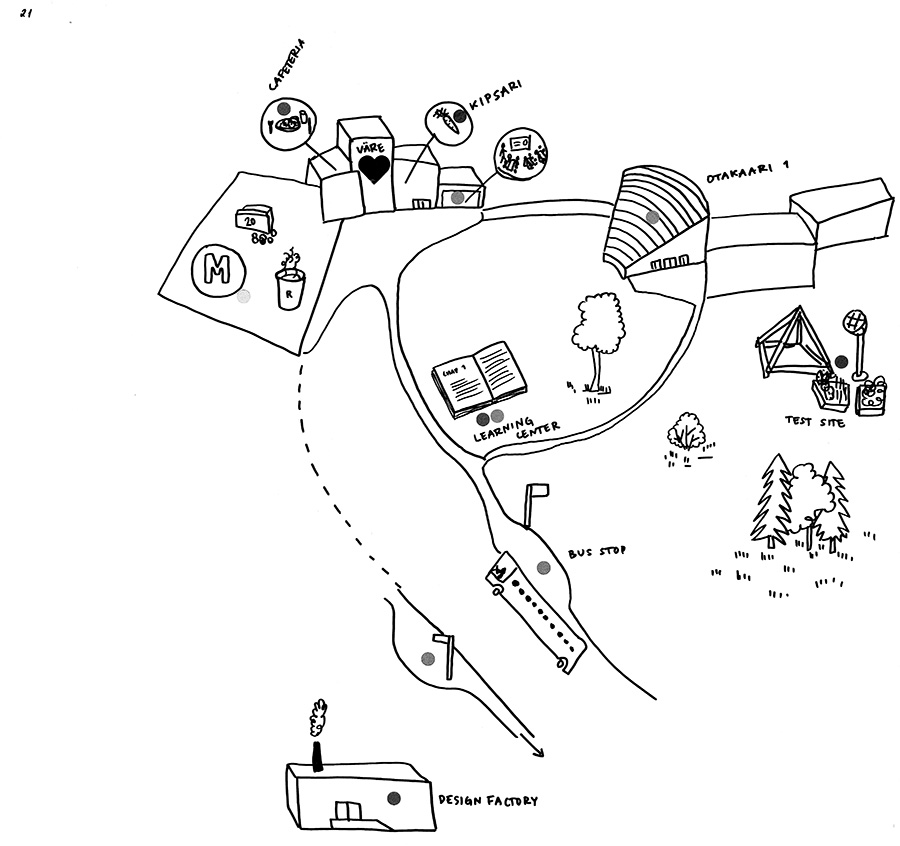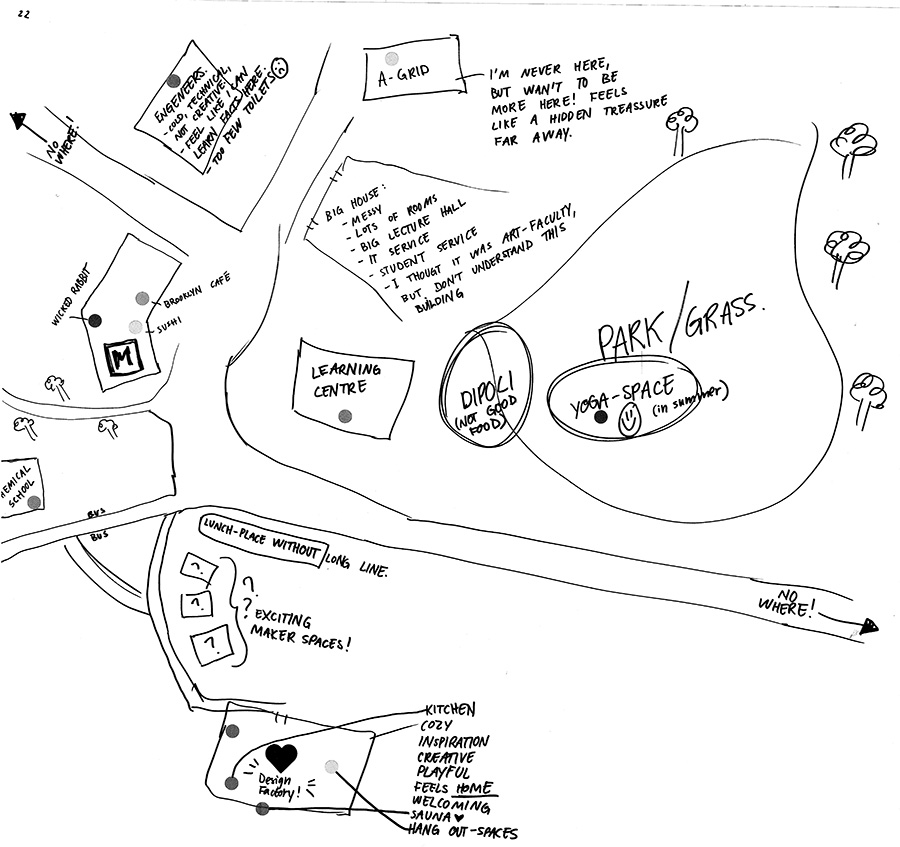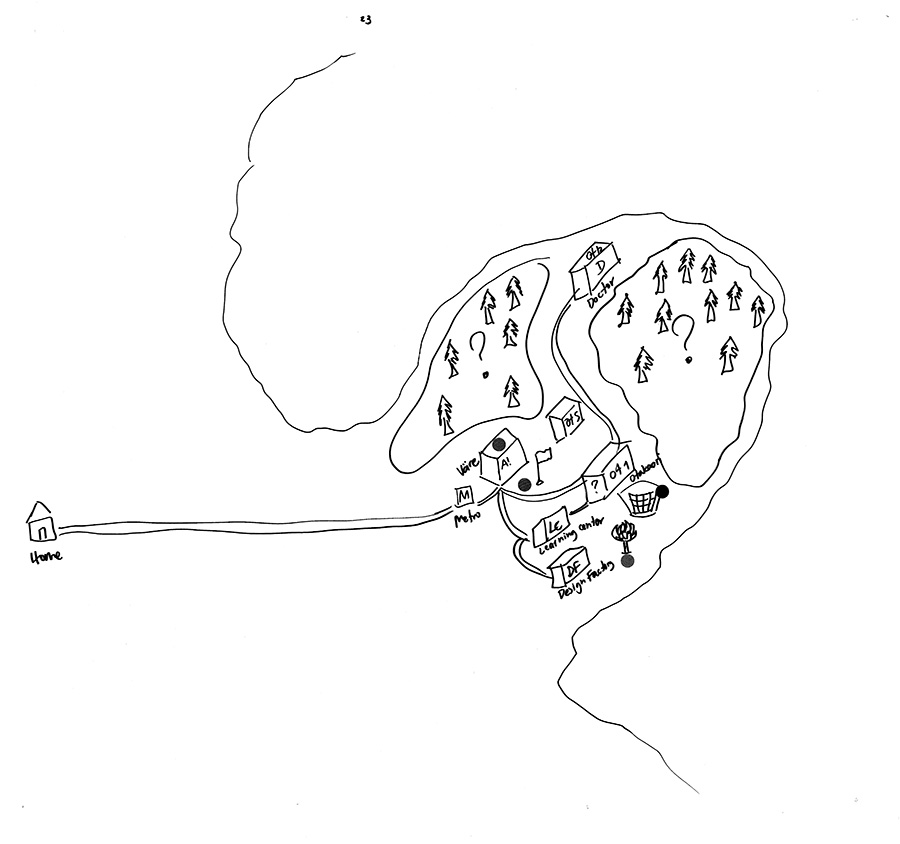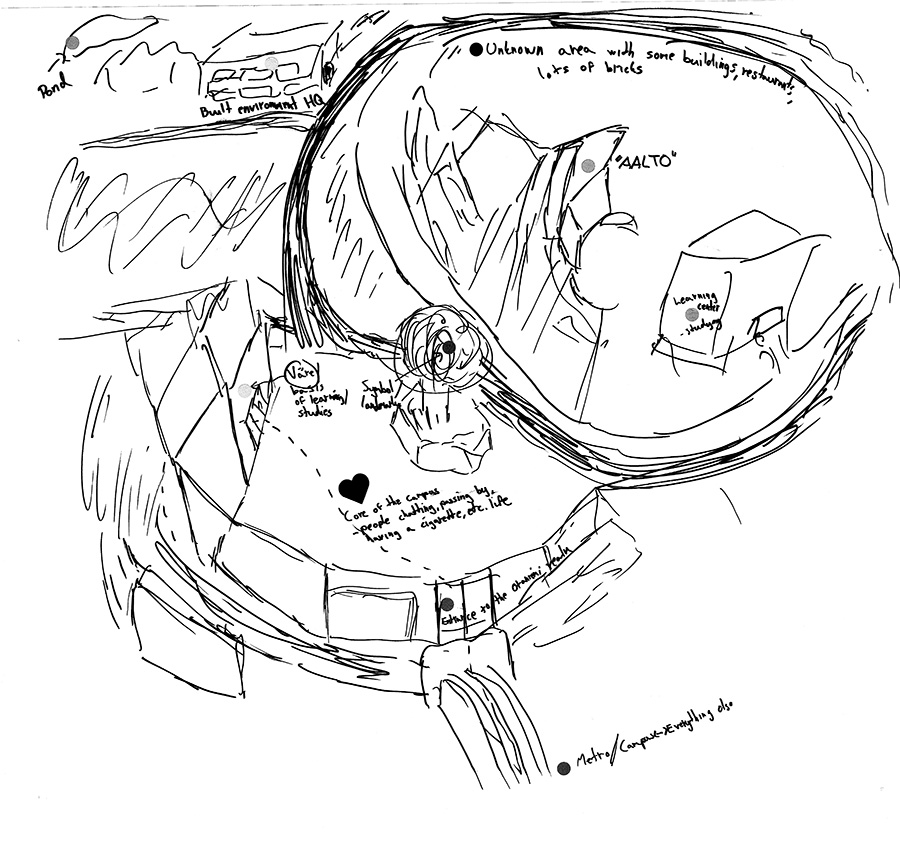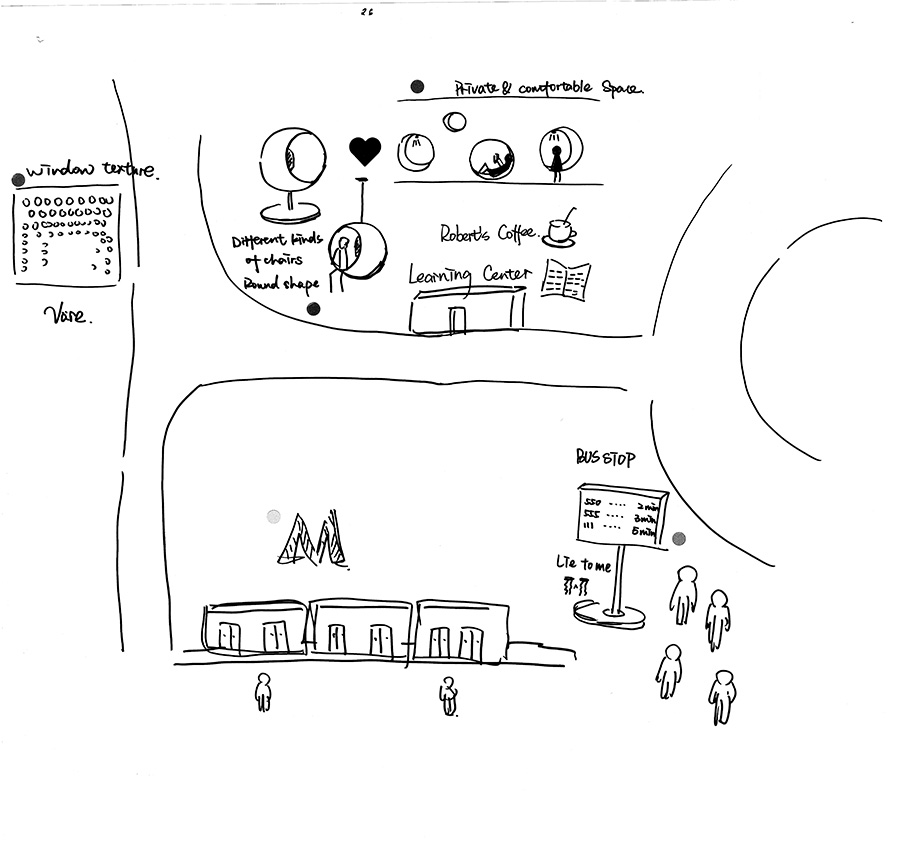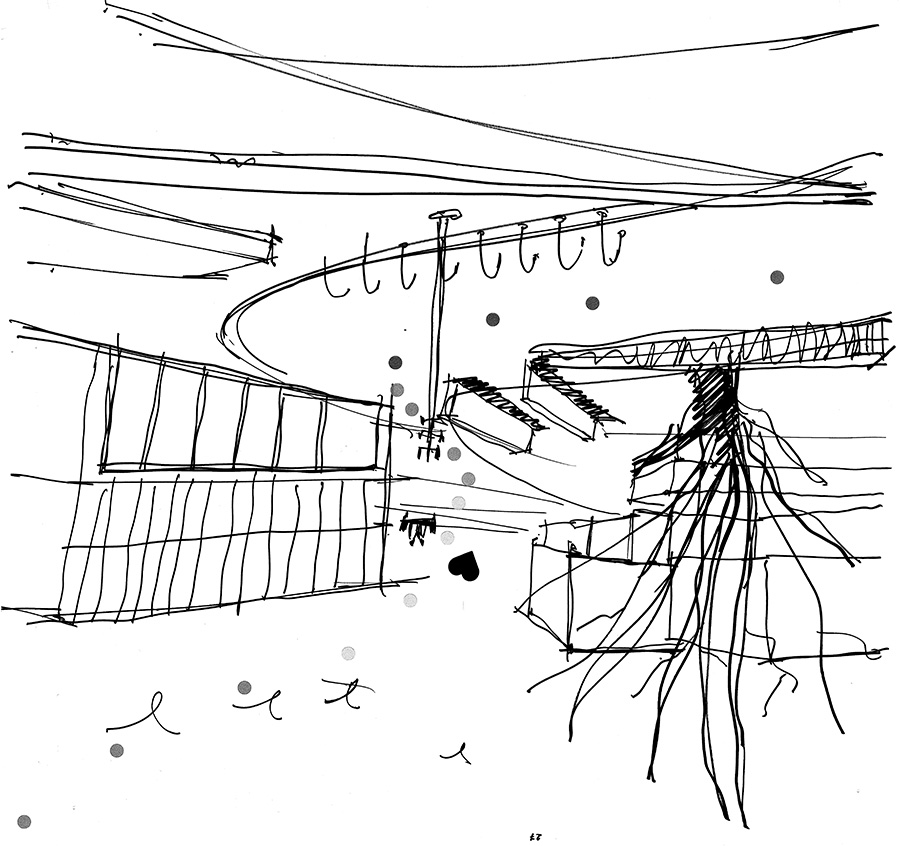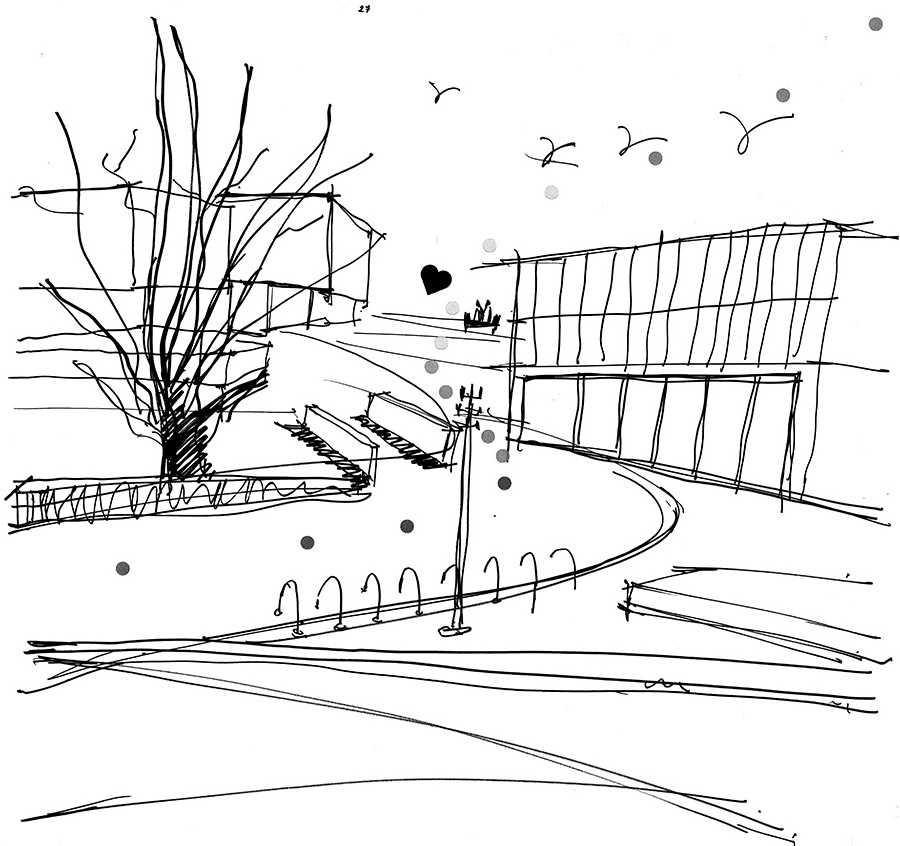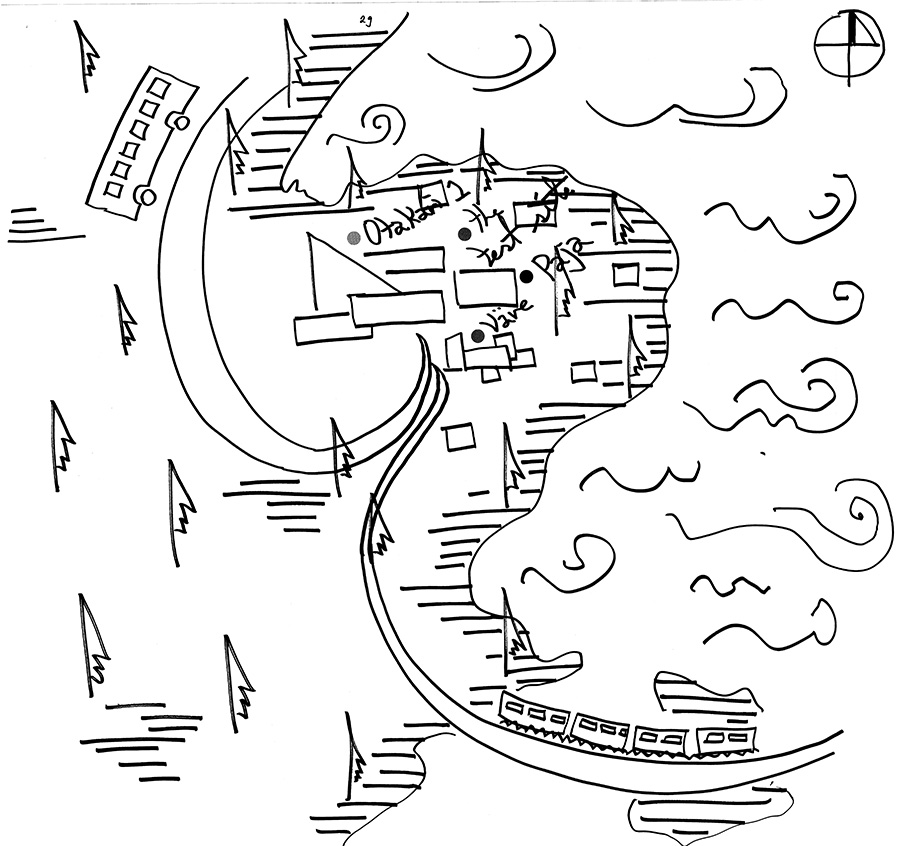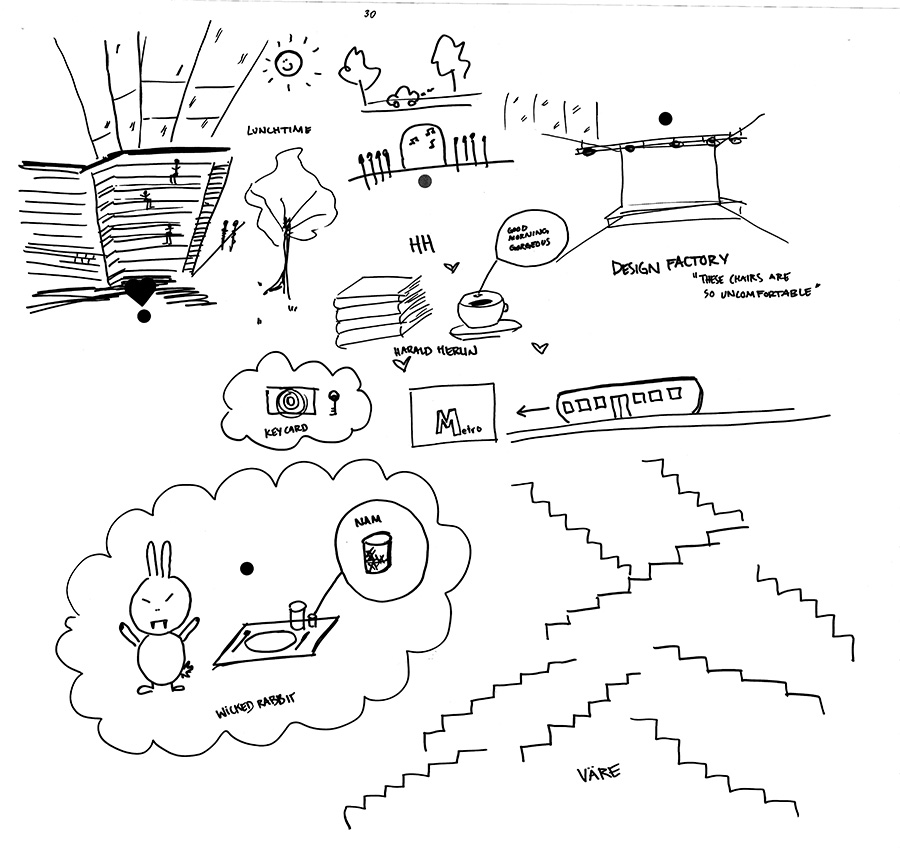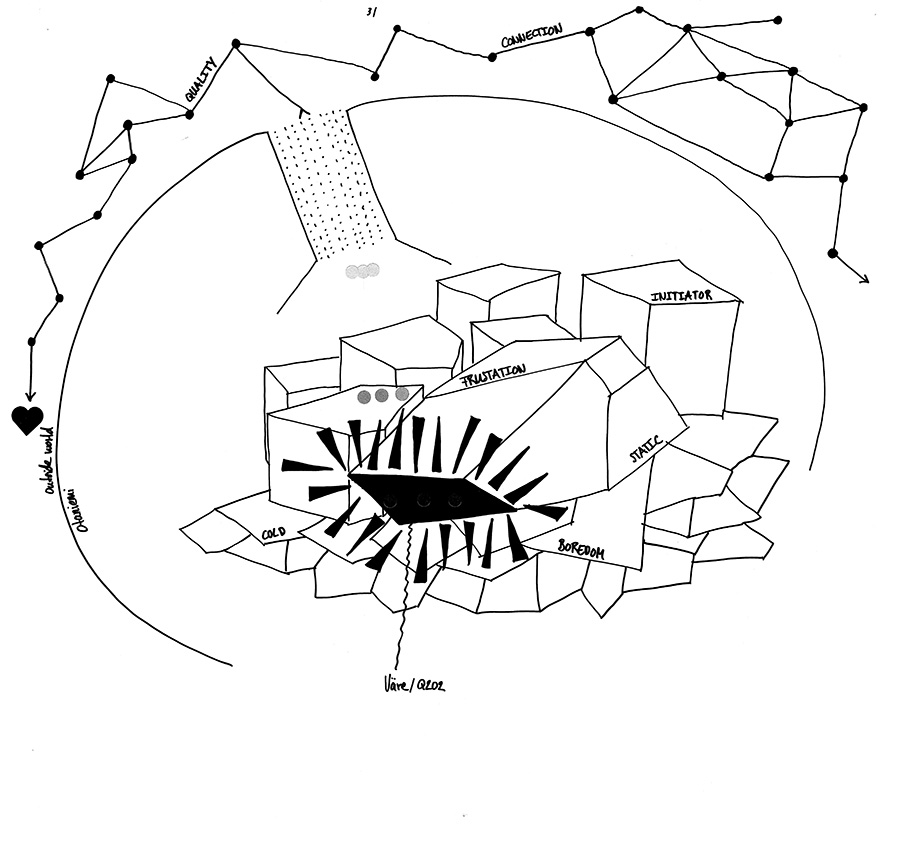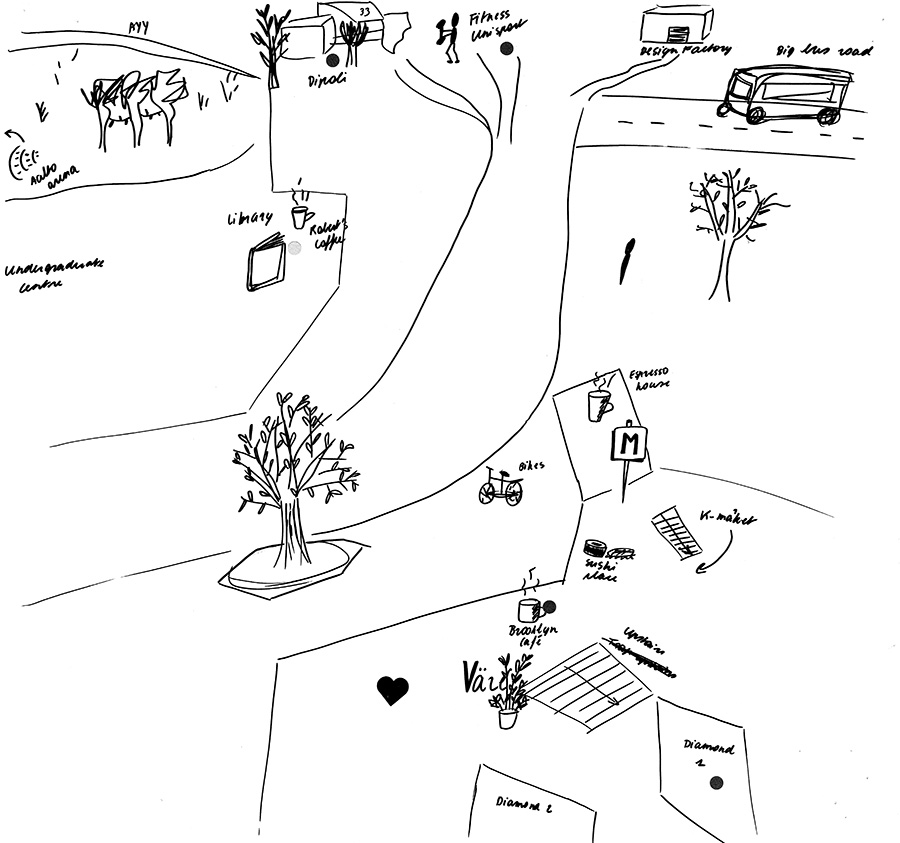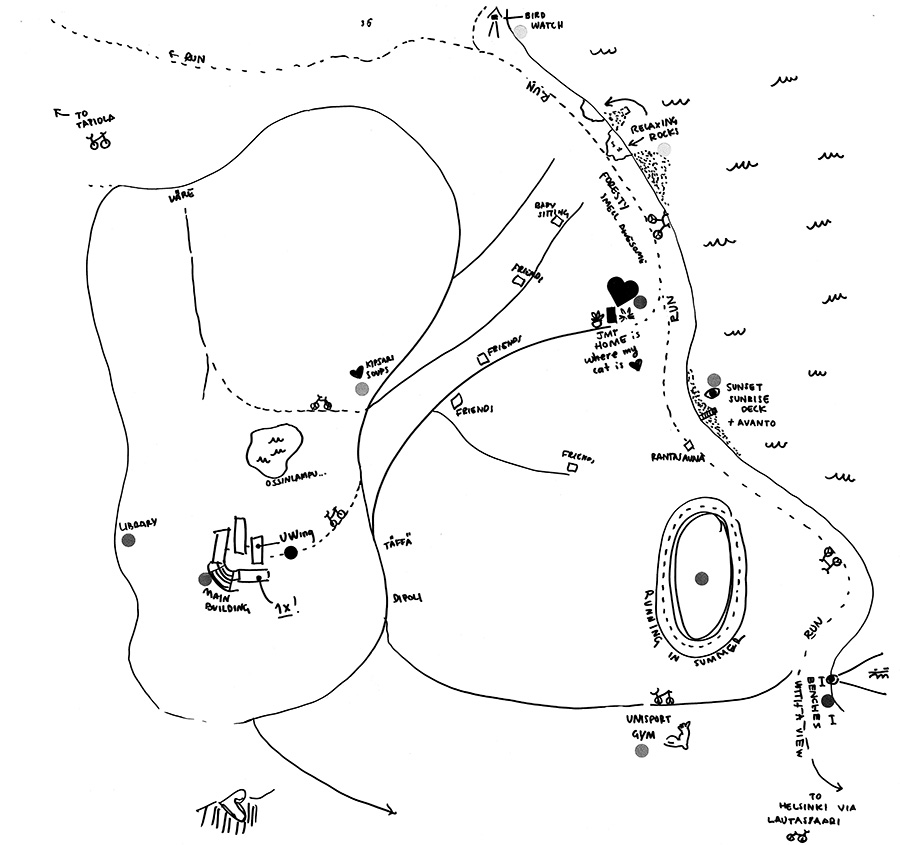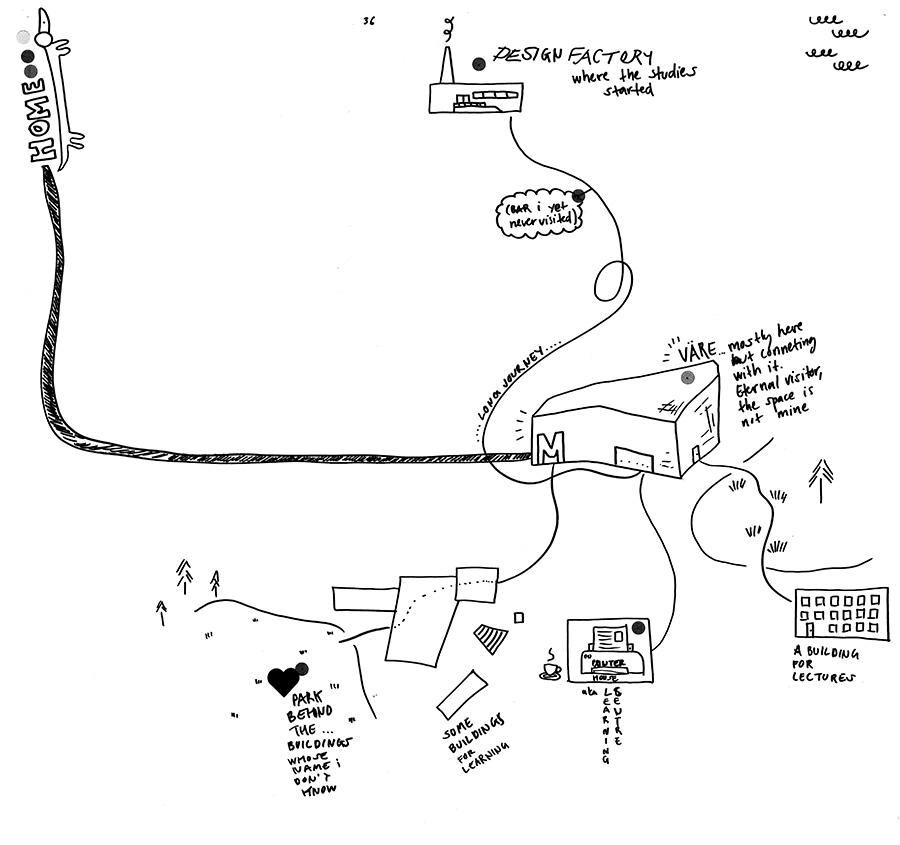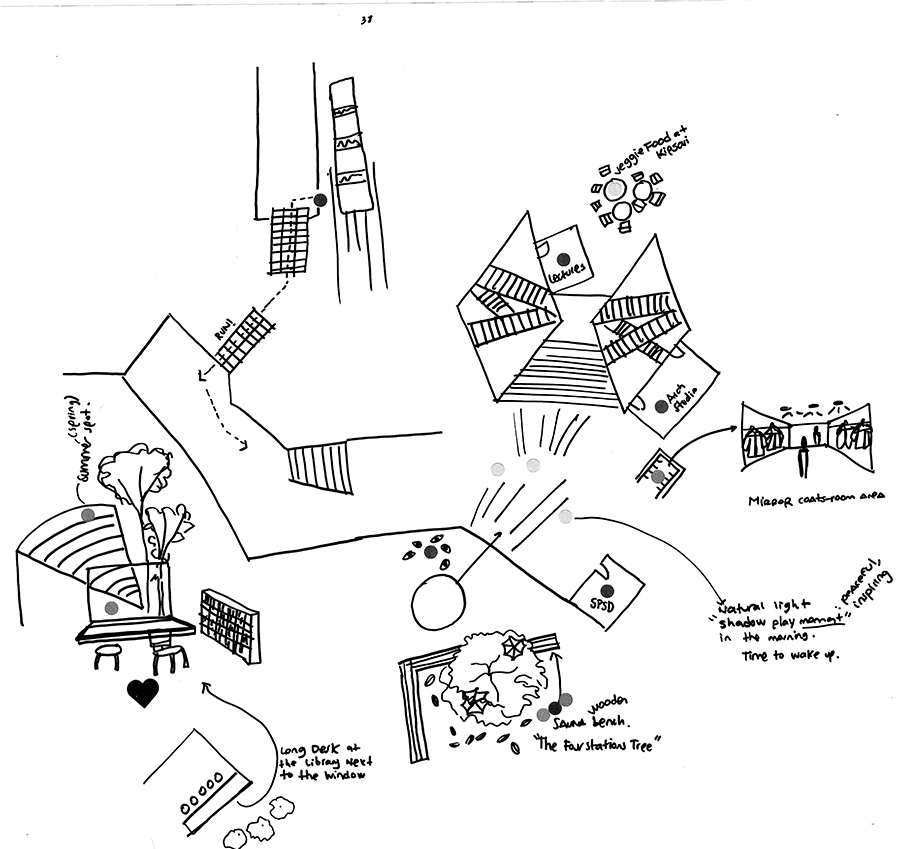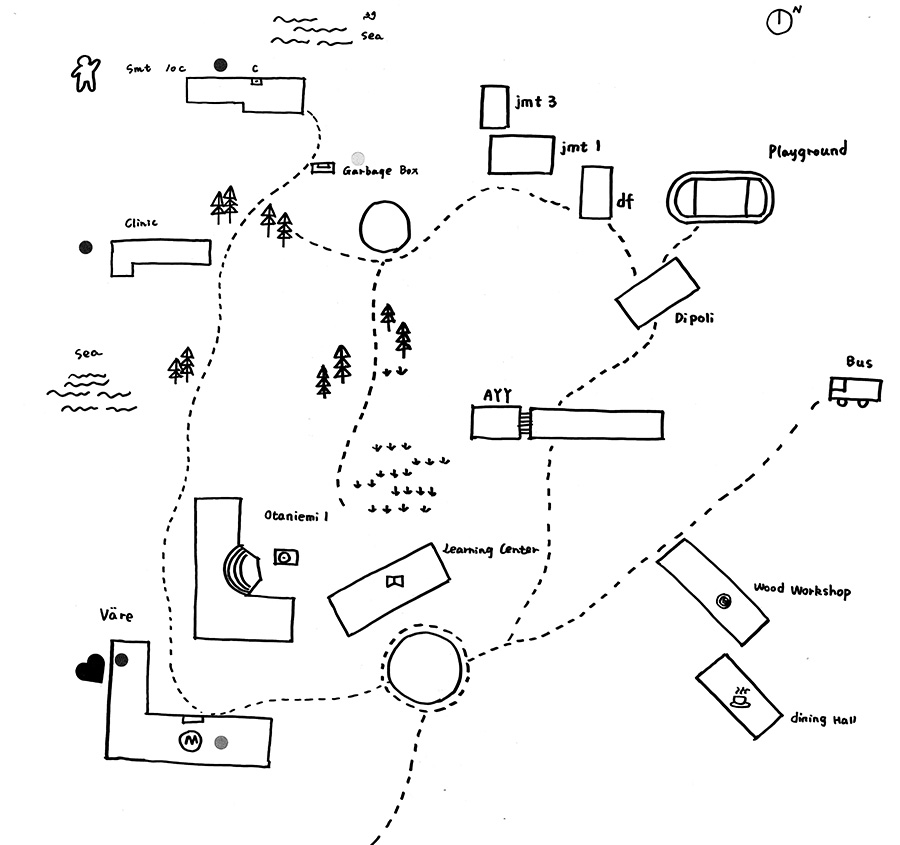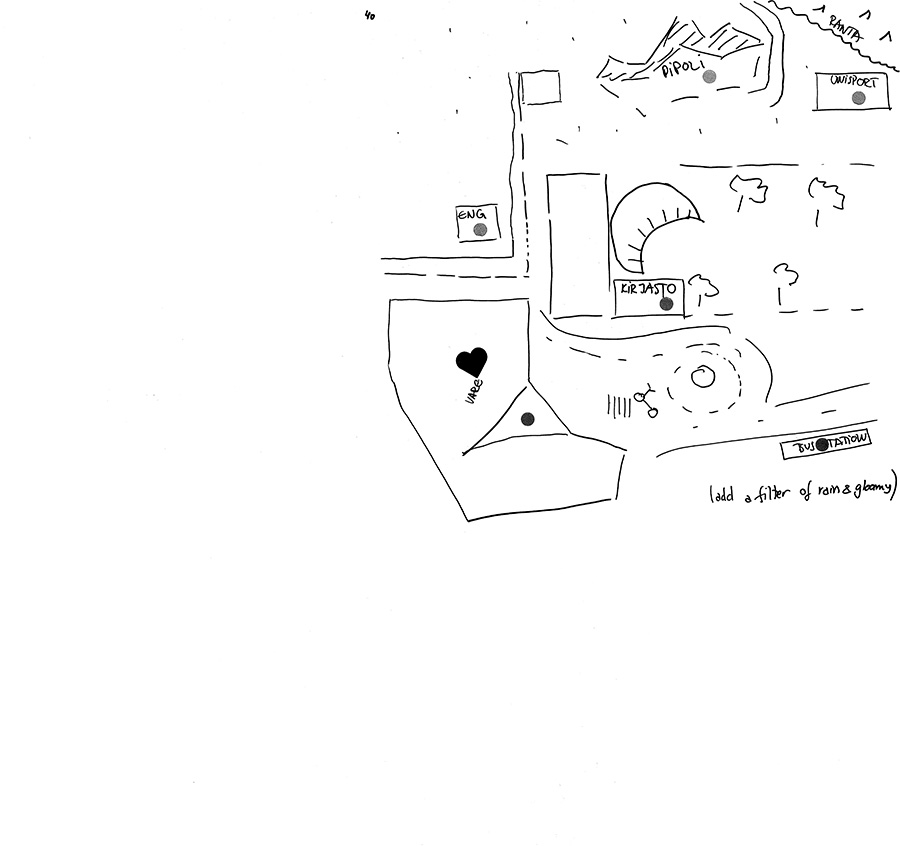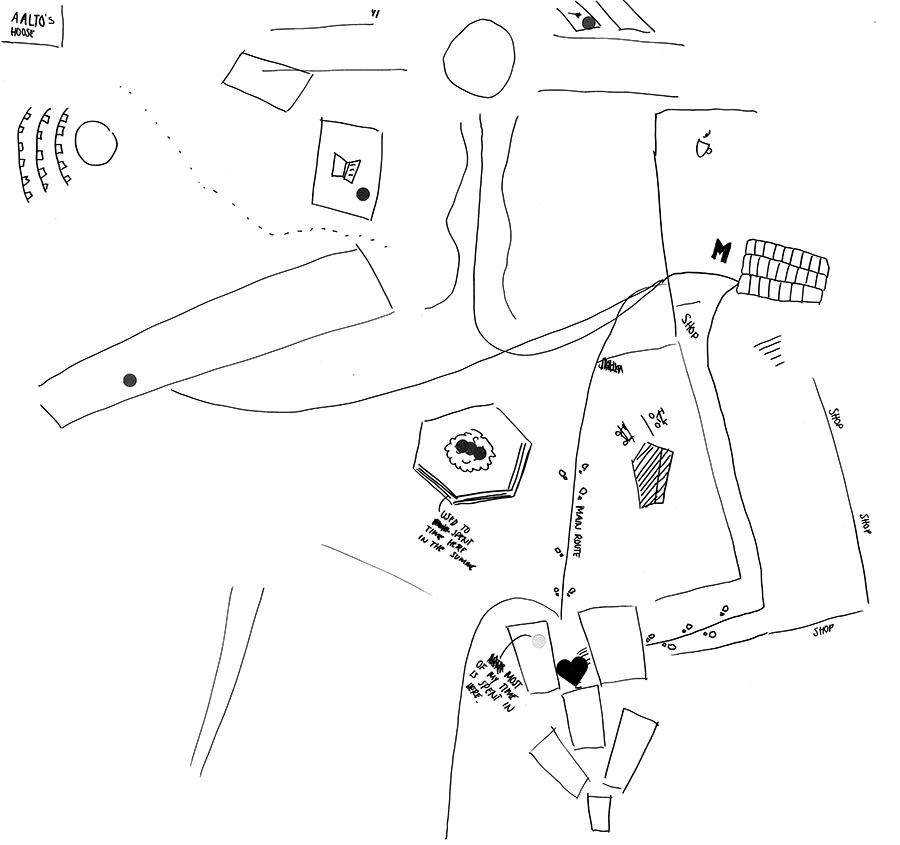Three maps representing the same space: original plan (left), present day plan from marketing material (middle) and a dataset used for this exposition — 37 hand-drawn mental maps (right).
5. METHODS
9. REFERENCES
The collection of images on the right displays mental representations or cognitive maps, drawn from memory by students who live in the area or come there to study. These maps are different from both the original and the present-day plans, but nonetheless meaningful not only for the authors of the drawings, but also for many people who can relate to the experiences described in them. Traditionally, these hand-drawn maps would be treated as a result of the limited capacities of our brains to process complex environmental stimuli. In order to save resources, we only capture the most important information about our environments and combine it into a representation that helps us navigate the space. This view depicts our cognition process passive and goal-oriented.
But this is not exactly how we humans work. According to Lefebvre, we not only perceive, but also actively produce our environments. A map we store in our minds is not only a functional device for navigation purposes, but a system of signs, memories and meanings that allow us to re-imagine the space, appropriate it and develop new social practices, making the space feel alive. Looking for connections between the mental images and the production of space is the main theme of this exposition. It assumes that the images of spaces that we hold in our minds are more than abstract cognitive representations:
At its most summary level, mental mapping affords a lens into the way people produce and experience space, forms of spatial intelligence, and dynamics of human–environment relations ranging from the minute experiences of everyday life to larger structural oppressions (Gieseking, 2013, p. 712).
The study places mental images inside Lefebvre's triad of social space (Lefebvre, 1991). It suggests that mental images are a manifestation of the third component of the triad, the lived space, which includes alternative imaginations, symbolic values and appropriations of space. The exposition explores this concept via a dataset of 37 mental maps created by Masters-level students at Aalto University in Finland in November 2018. By qualitatively analysing the contents and the morphology of the hand-drawn maps, it traces how the lived space is both passively perceived and actively re-imagined.
The exposition begins by introducing the concepts of a cognitive map and a mental map and describes how mental mapping was used in urban design and planning. The main part of the exposition includes the analysis of the mental images and interpretation of the findings which are tied to the literature on embodiment and the production of space.
6. RESULTS
The three maps in Figure 1 represent the same area. The image on the left is an original plan developed in the 1950s. It envisions the area as a lush green space with buildings following the natural lines of the landscape. The image in the middle is a geographically accurate representation of the same space used in marketing materials. It looks dense and packed with buildings of different shapes and sizes. Both of these images represent a conceived space — a space constructed by planners, engineers and architects through designs, maps and policies.
7. DISCUSSION
8. CONCLUSION
